Lighting The Lake:
The Grand Haven Lights
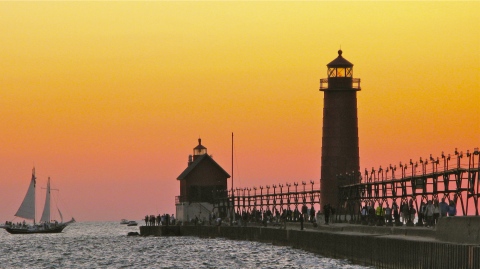
In late October of 1779, the commander of the British fort at Michilimackinac, Lieutenant Governor Patrick Sinclair, sent the sloop HMS Felicity on a voyage to circumnavigate Lake Michigan. Felicity had been built in 1773 or 1774 in Detroit for the trader John Askin, but taken over in late 1778 by the Provincial Marine, the arm of the British Navy responsible for patrolling the Great Lakes, St. Lawrence River and Lake Champlain. Captain Samuel Robertson commanded the 45-ton sloop, armed with four 3-foot swivel guns, and her crew of eight during the voyage. In the first week of November Felicity became the first ship to sail to the mouth of the Grand River at what would become Grand Haven.
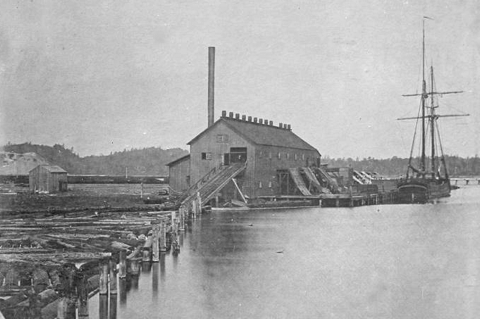
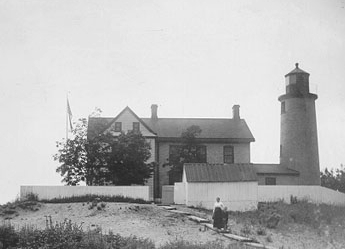
In 1853 title was obtained for a new site on a sand bluff high above lake level and further inland from the water's edge. At the same time, light stations were being built at Point Betsey and Beaver Island Harbor, so it was decided the new Grand Haven light would use the same construction plans. Materials were delivered the following year and construction was completed in 1855. With the additional elevation on the bluff, and the fourth-order fresnel lens light placed 20 feet up in the tower, the flashing signal could now be seen 14 miles out on the lake in clear weather. A wood-framed fog bell building was also constructed on the original acre of land near the site of the collapsed light.
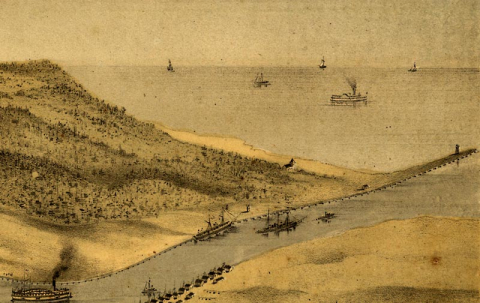
Since Congress would not appropriate money for additional harbor improvement, the Detroit and Milwaukee Railroad began construction of a pier on the south side of the river in 1859. The new pier served to protect the cross-lake ferries that the railroad operated from their Grand Haven terminus. The railroad also erected a small beacon near the end, thus beginning the history of pier lights at Grand Haven. Eventually the government was obliged to take over maintenance and improvement of the pier and its lights from private hands.
With the pier lights in operation, the utility of the main light came into question. In the early 1900's, the dwelling was remodeled to increase housing for the light keepers, but the tower was torn down. In 1956, after automation of the pier lights, the dwelling was sold into private hands.
Improvements to the pier allowed the fog signal to be moved out from the shoreline and a beacon was constructed at the end of the gable. By 1922 the effects of weather on the wood-framed fog signal building required that it be sheathed over in corrugated iron sheets.
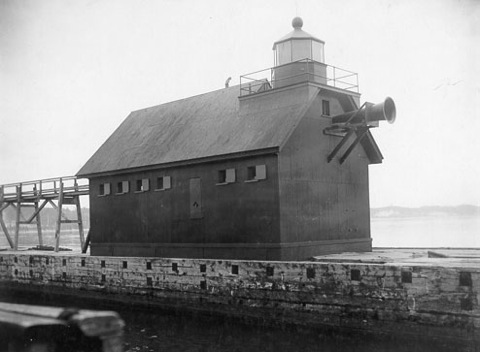
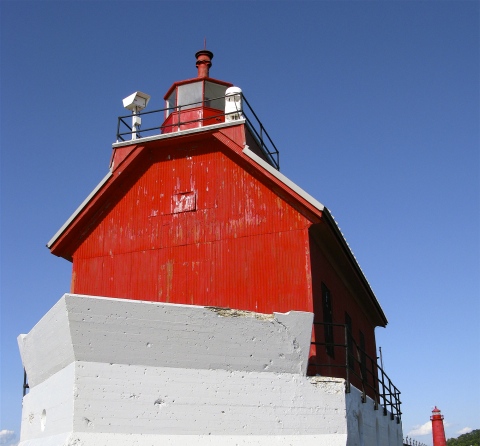
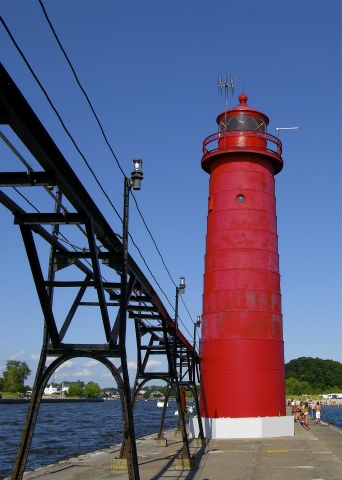
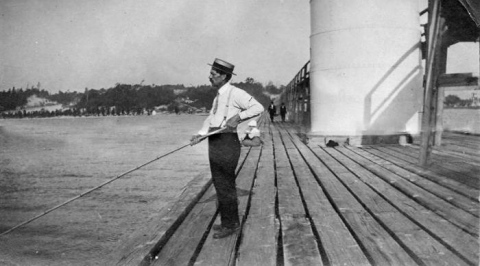
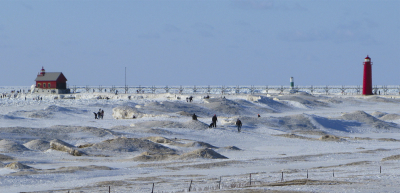
In 2009 the Coast Guard determined that the Grand Haven pier lights were no longer needed and offered them at no cost to entities that could maintain them in the future. In December 2012 the lights were given to the City of Grand Haven and the Grand Haven Lights Conservancy will maintain them going forward. The Grand Haven pier lights should remain a popular local attraction and a beacon to recreational boaters well into the 21st century.
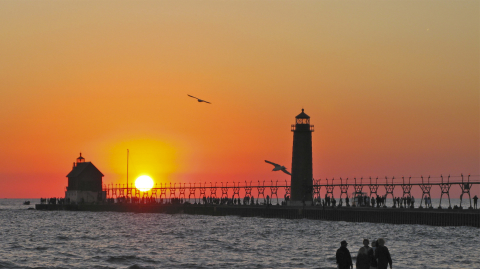
--Copyright © April 2014 Sharon Pisacreta
Grand Haven Main Light at Terry Pepper's "Seeing The Light" website
Grand Haven Pier Lights at Terry Pepper's "Seeing The Light" website
Grand Haven, Michigan at Wikipedia
The original Fresnel lens installed in 1855 can be seen at the Tri-Cities Historical Museum.
Historic Light Station Information at the US Coast Guard website
Elizabeth B. Sherman,
Beyond the Windswept Dunes: The Story of Maritime Michigan (Great Lakes Books Series)
Wallace K. Ewing and David H. Siebold,
Maritime Grand Haven: Coast Guard City USA (Images of America)